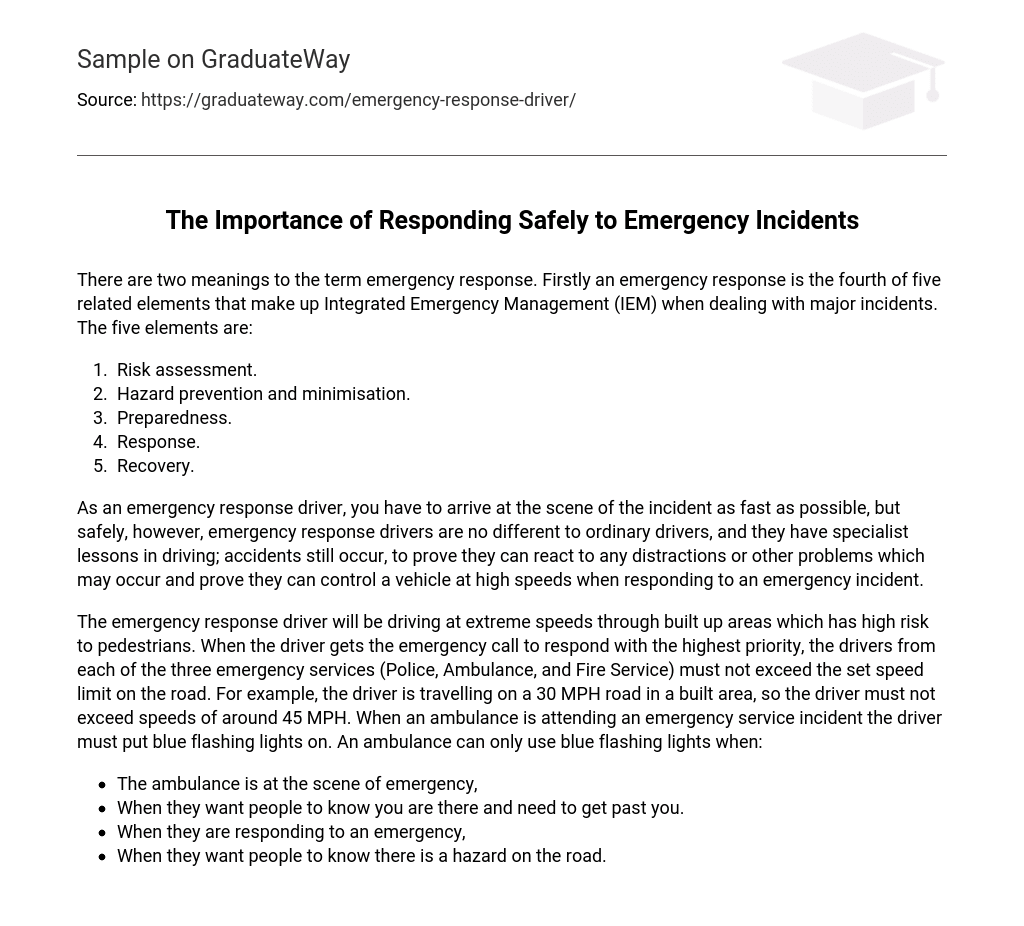There are two meanings to the term emergency response. Firstly an emergency response is the fourth of five related elements that make up Integrated Emergency Management (IEM) when dealing with major incidents. The five elements are:
- Risk assessment.
- Hazard prevention and minimisation.
- Preparedness.
- Response.
- Recovery.
As an emergency response driver, you have to arrive at the scene of the incident as fast as possible, but safely, however, emergency response drivers are no different to ordinary drivers, and they have specialist lessons in driving; accidents still occur, to prove they can react to any distractions or other problems which may occur and prove they can control a vehicle at high speeds when responding to an emergency incident.
The emergency response driver will be driving at extreme speeds through built up areas which has high risk to pedestrians. When the driver gets the emergency call to respond with the highest priority, the drivers from each of the three emergency services (Police, Ambulance, and Fire Service) must not exceed the set speed limit on the road. For example, the driver is travelling on a 30 MPH road in a built area, so the driver must not exceed speeds of around 45 MPH. When an ambulance is attending an emergency service incident the driver must put blue flashing lights on. An ambulance can only use blue flashing lights when:
- The ambulance is at the scene of emergency,
- When they want people to know you are there and need to get past you.
- When they are responding to an emergency,
- When they want people to know there is a hazard on the road.





